Unlocking the secrets of Earth’s planetary boundary layer (PBL), a pivotal zone influencing air quality and climate, a new study offers unprecedented insights into atmospheric thermal contrasts (TC). By scrutinizing satellite data, researchers have shed light on how the surface-to-atmosphere temperature gradient affects the detection of atmospheric pollutants.
Tag: Satellite Data
UAH researchers use Earth observations to identify damage, impacts from earthquakes in Turkey
The country of Turkey is still reeling from a 7.8 and a 7.5 magnitude earthquake and thousands of aftershocks that occurred in February, causing widespread destruction to infrastructure and human life.
Global climate trend since Dec. 1 1978: +0.14 C per decade
Global Temperature Report: August 2021
Paper on climate model’s warming bias co-authored by UAH’s Dr. Christy is top download
A research paper that found a significant warming bias globally in the newest climate models has been cited by the American Geophysical Union (AGU) as among the top 10% most downloaded in 2020 from its journal Earth and Space Science.
Global climate trend since Dec. 1 1978: +0.14 C per decade
Global Temperature Report: June 2021
(New Reference Base, 1991-2020)
Global climate trend since Dec. 1 1978: +0.14 C per decade
Global Temperature Report: May 2021
(New Reference Base, 1991-2020)
Global composite temperature -0.01 C (-0.02 °F) below seasonal average
Global Temperature Report: March 2021
(New Reference Base, 1991-2020)
New oil palm map to inform policy and landscape-level planning
A new map of the extent and year of detection of oil palm plantations will help understand trends in oil palm expansion.
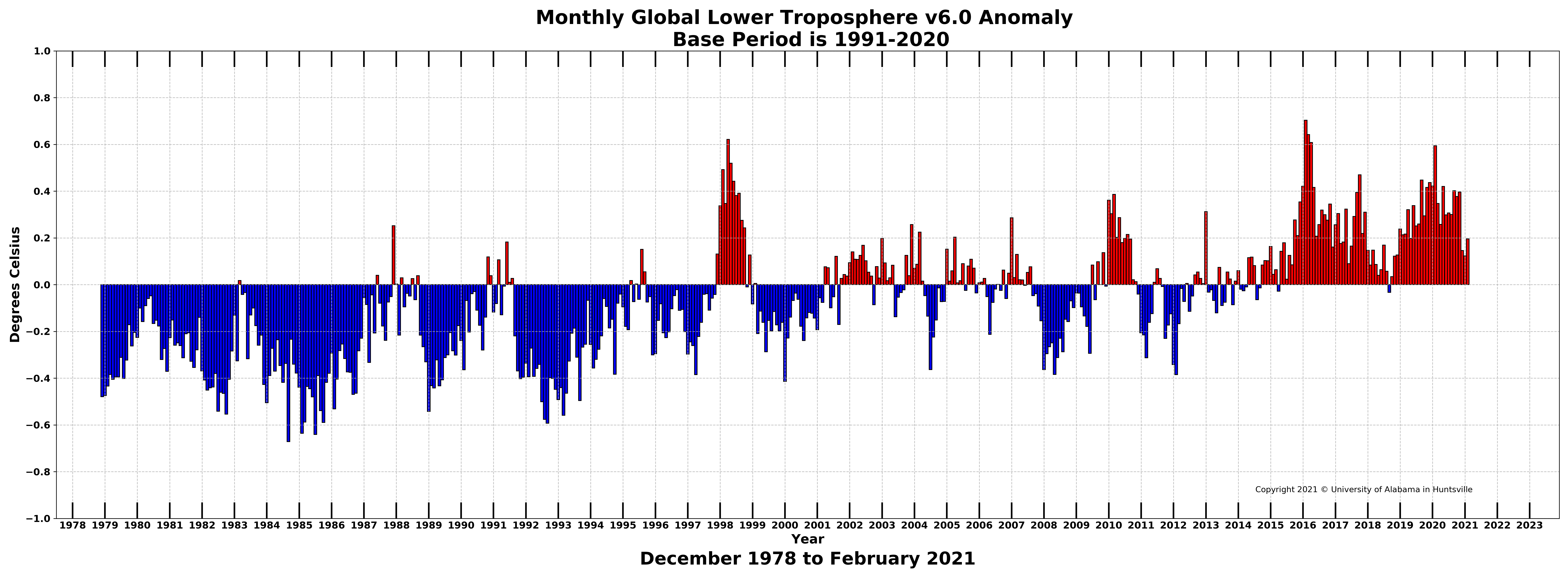
Global climate trend since Dec. 1 1978: +0.14 C per decade
Global Temperature Report: February 2021
(New Reference Base, 1991-2020)
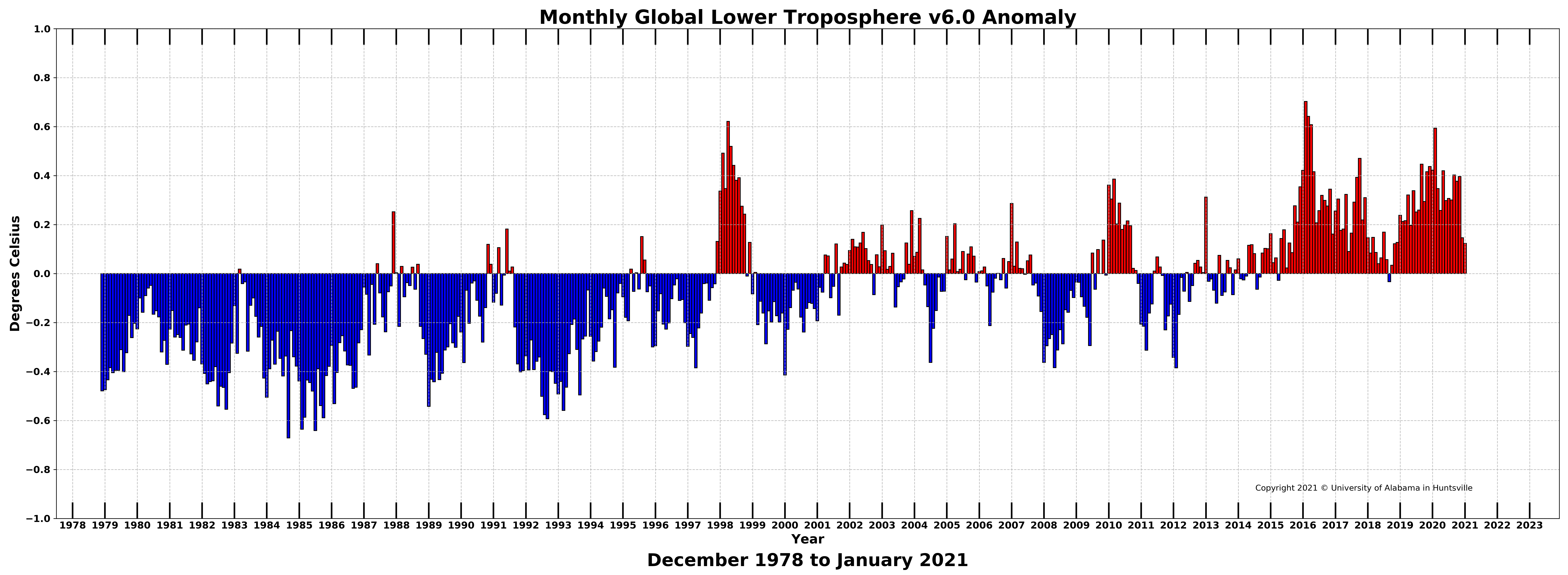
Global climate trend since Dec. 1 1978: +0.14 C per decade
Global Temperature Report: January 2021
with New Reference Base, 1991-2020
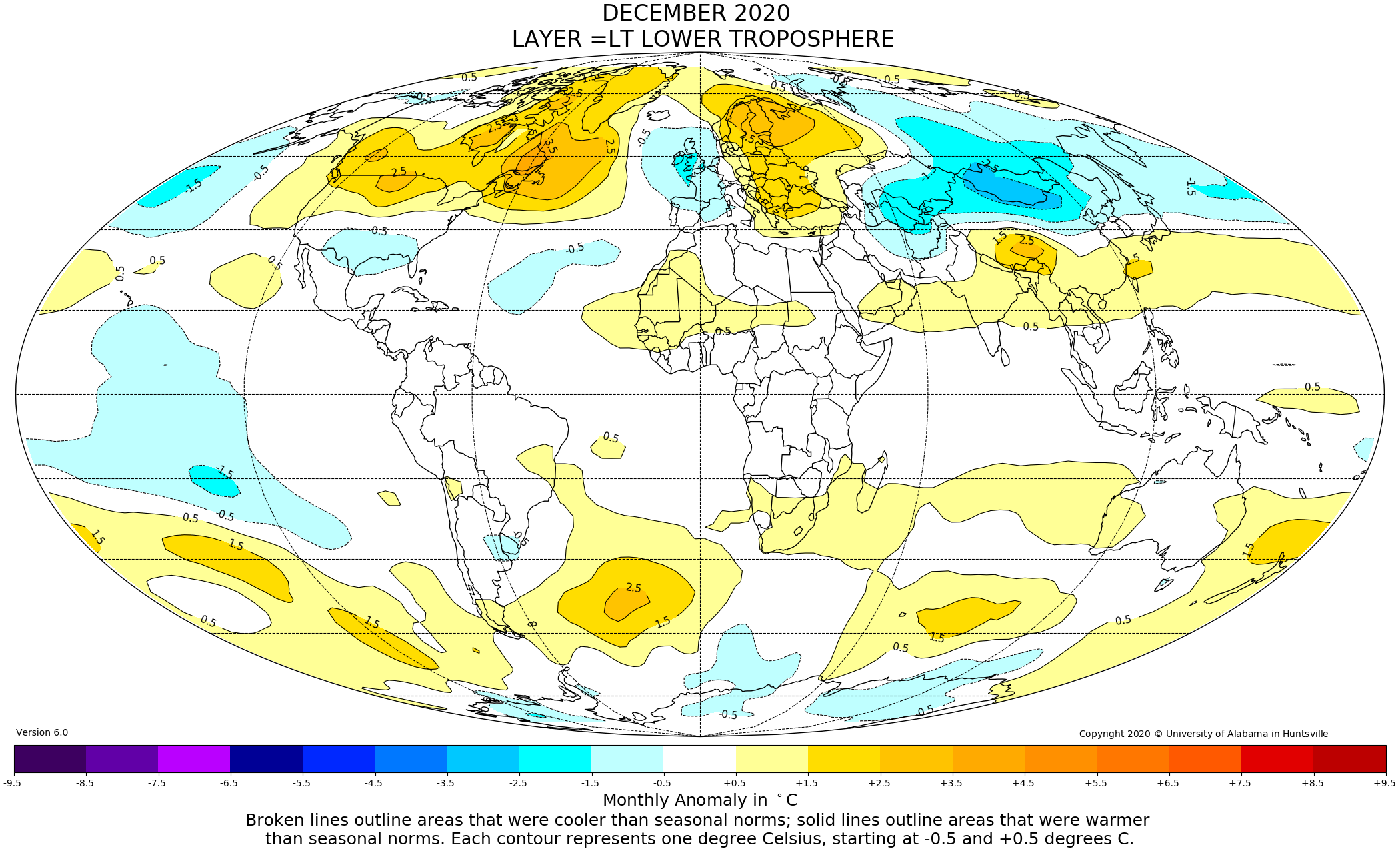
Global climate trend since Dec. 1 1978: +0.14 C per decade
Global Temperature Report: December 2020
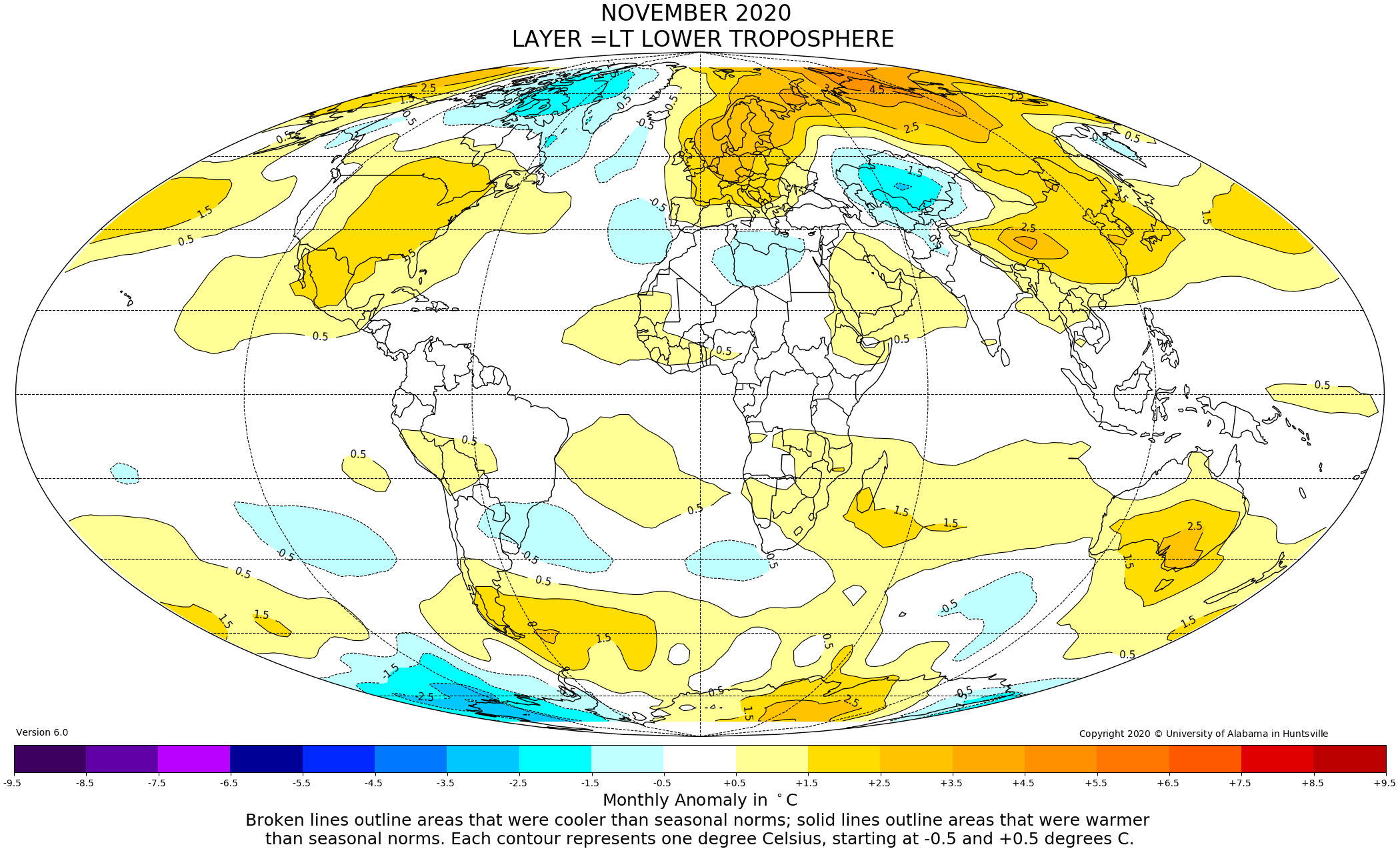
Global climate trend since Dec. 1 1978: +0.14 °C (+0.25 °F) per decade
Global Temperature Report: November 2020

Global climate trend since Dec. 1 1978: +0.14 °C (+0.25 °F) per decade
Global Temperature Report: October 2020
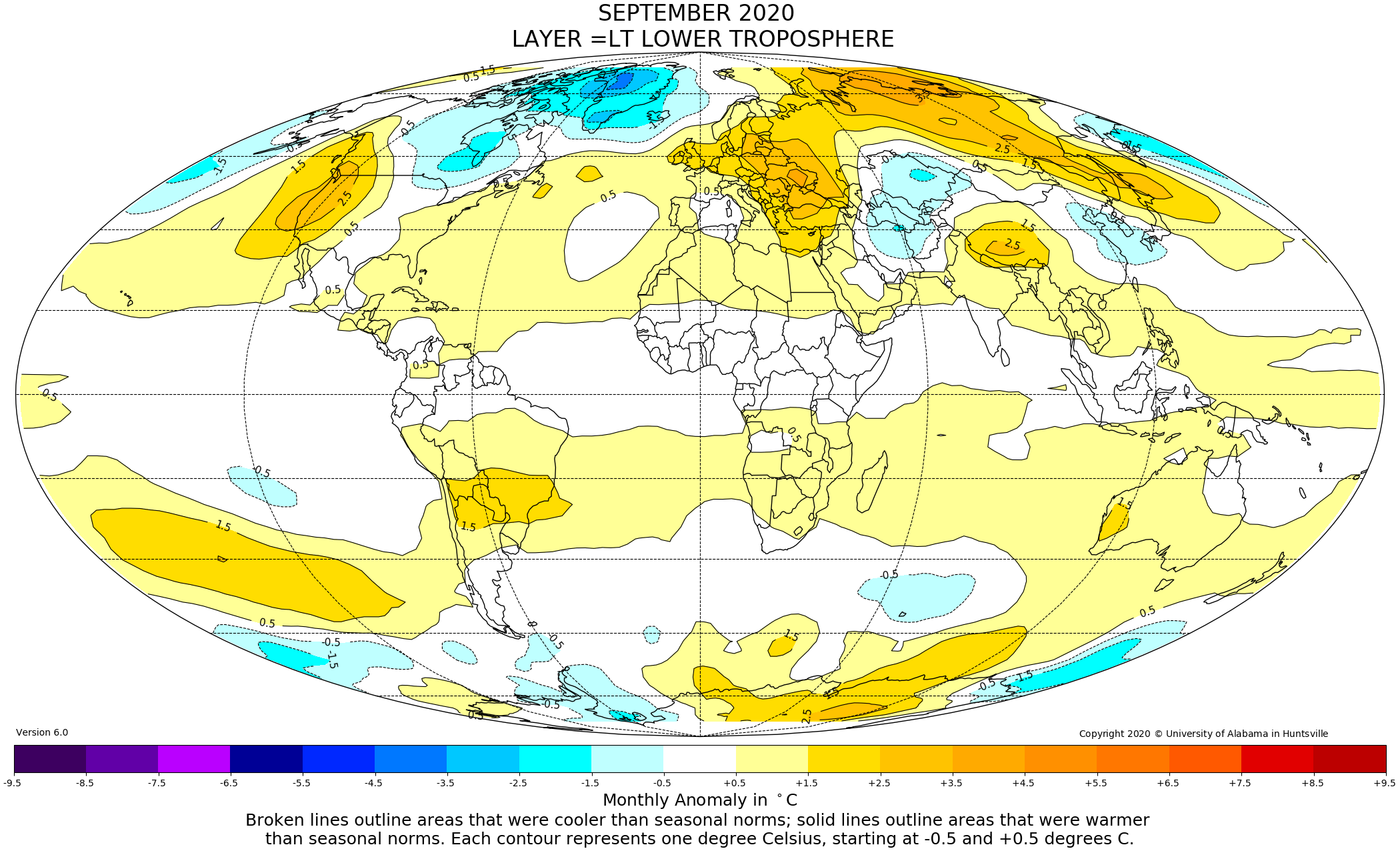
Global climate trend since Dec. 1 1978: +0.14 °C (+0.25 °F) per decade
Global Temperature Report: September 2020
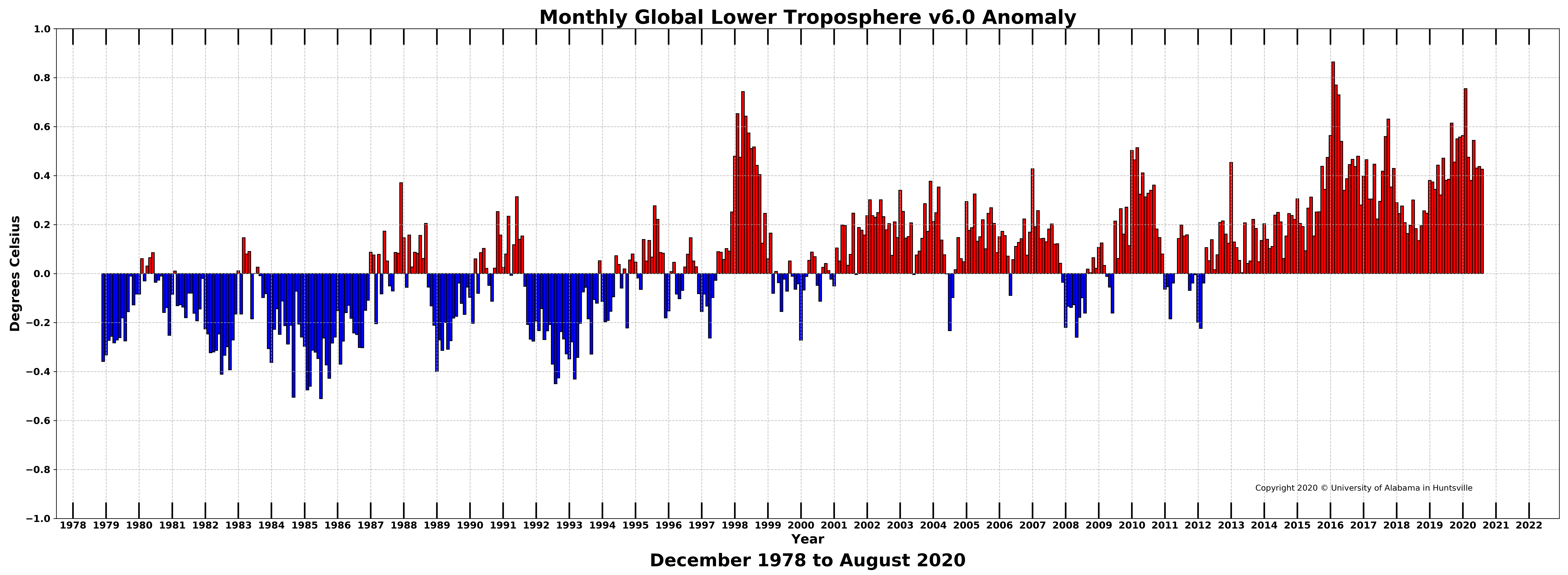
Global climate trend since Dec. 1 1978: +0.14 C per decade
Global Temperature Report: July 2020
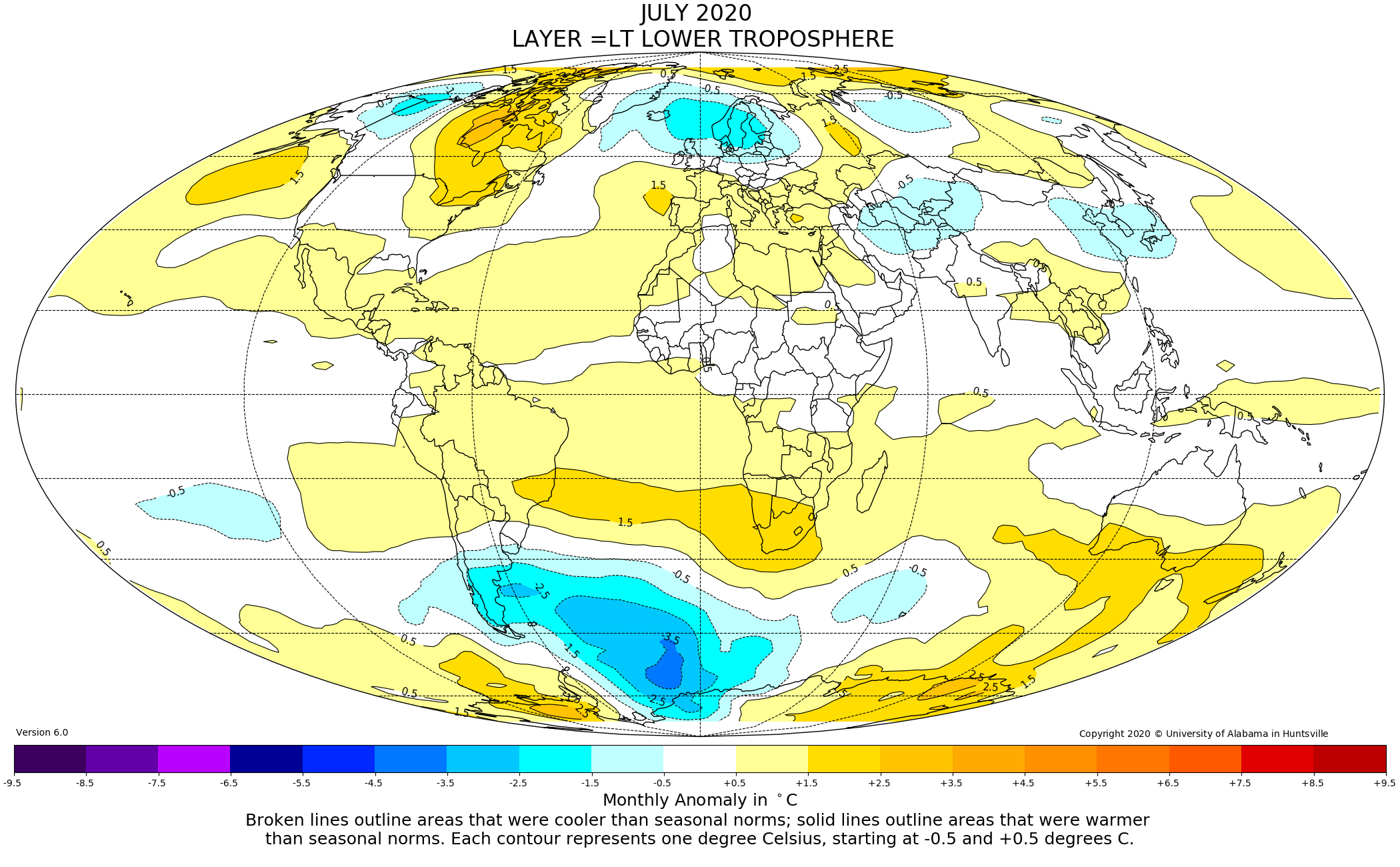
Global climate trend since Dec. 1 1978: +0.14 C per decade
Global Temperature Report: July 2020

Global climate trend since Dec. 1 1978: +0.14 C per decade
Global Temperature Report: June 2020
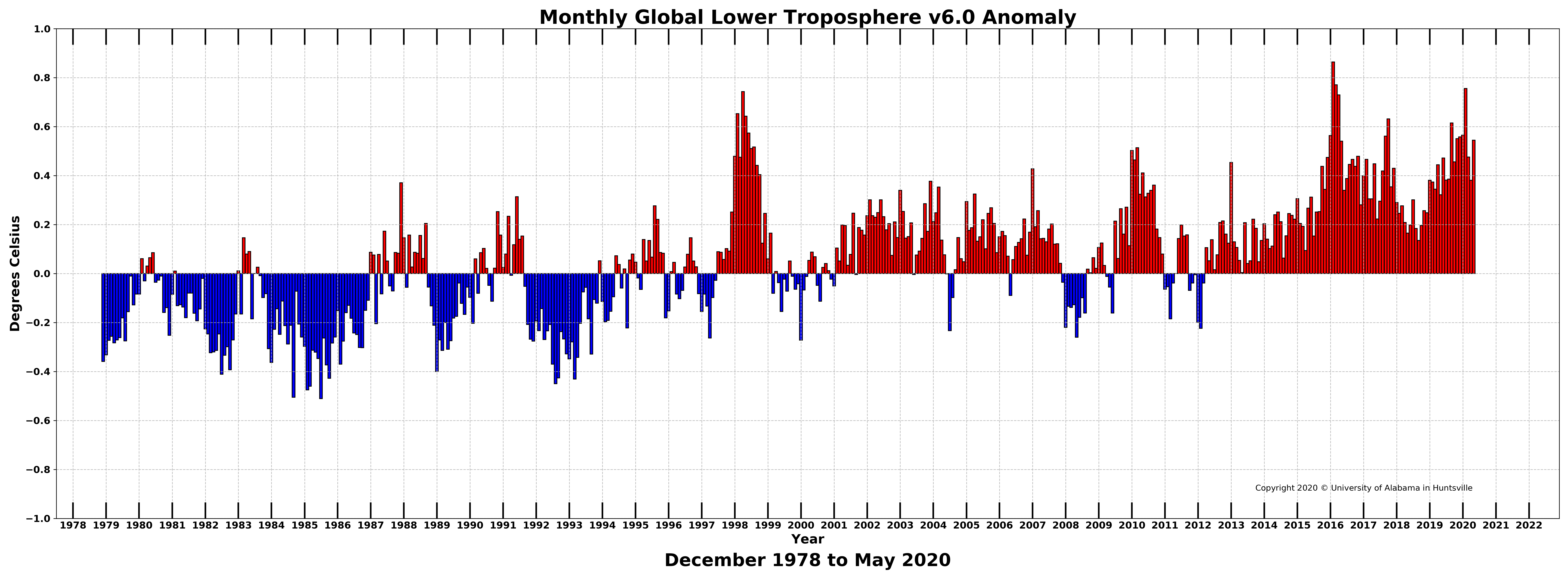
Global climate trend since Dec. 1 1978: +0.14 C per decade
Global Temperature Report: May 2020

Global climate trend since Dec. 1 1978: +0.135 C per decade
Global Temperature Report: April 2020
Can sub-Saharan Africa achieve sustainable access to energy for all by 2030?
A new study shows that to ensure universal access to affordable, reliable, and modern electricity services by 2030 in sub-Saharan Africa, the pace of electrification must more than triple.
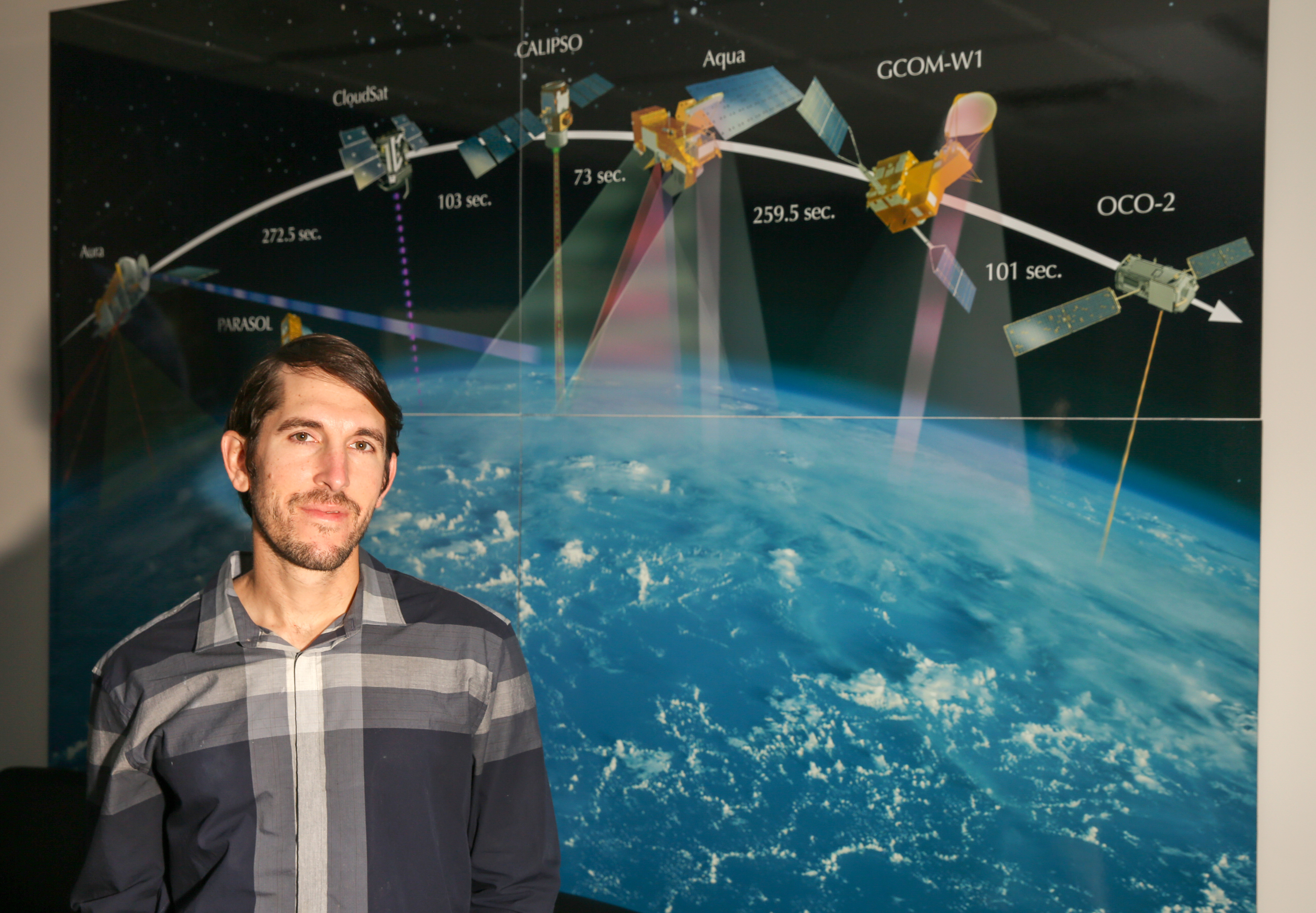
COVID lockdown, seasonal changes affect California’s emissions
California’s nitrous oxide (NO₂) air pollution has been reduced by a combination of the state’s COVID-19 lockdown and naturally occurring effects, according to an atmospheric scientist at The University of Alabama in Huntsville (UAH)
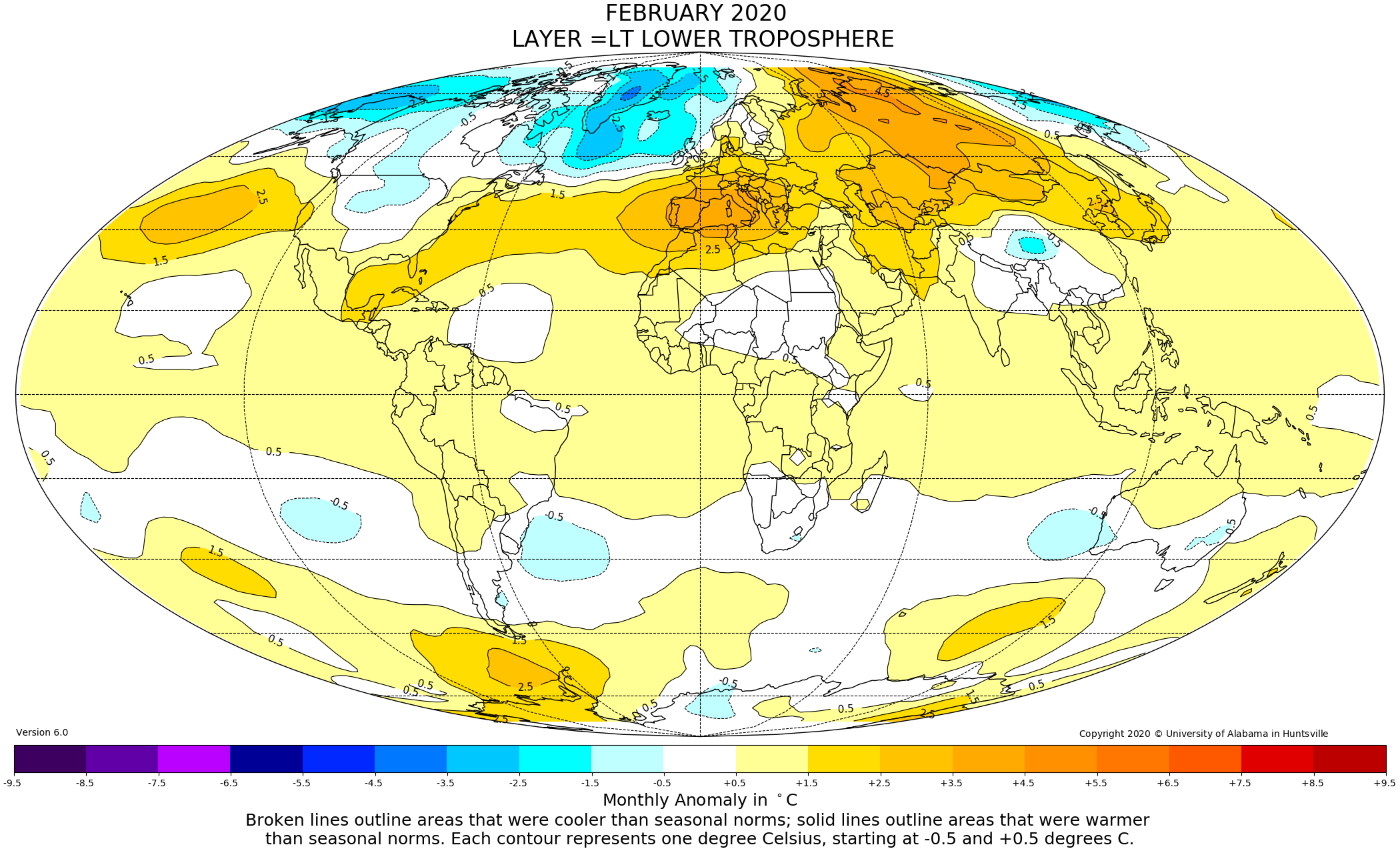
Global climate trend since Dec. 1 1978: +0.134 C per decade
Global Temperature Report: February 2020
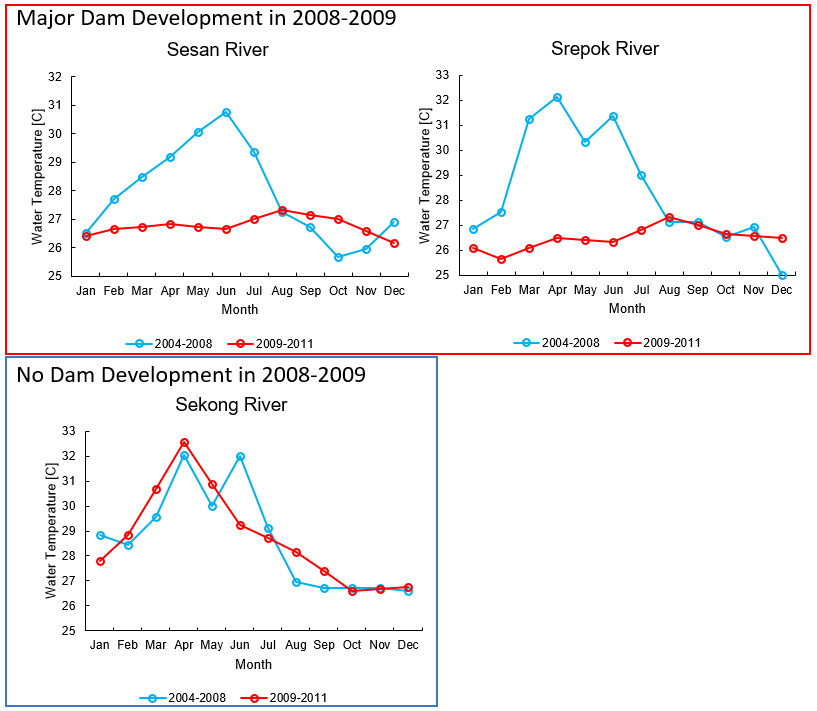
Hydropower dams cool rivers in the Mekong River basin, satellites show
Using 30 years of satellite data, UW researchers discovered that within one year of the opening of a major dam in the Mekong River basin, downstream river temperatures during the dry season dropped by up to 3.6 degrees F (2 degrees C).
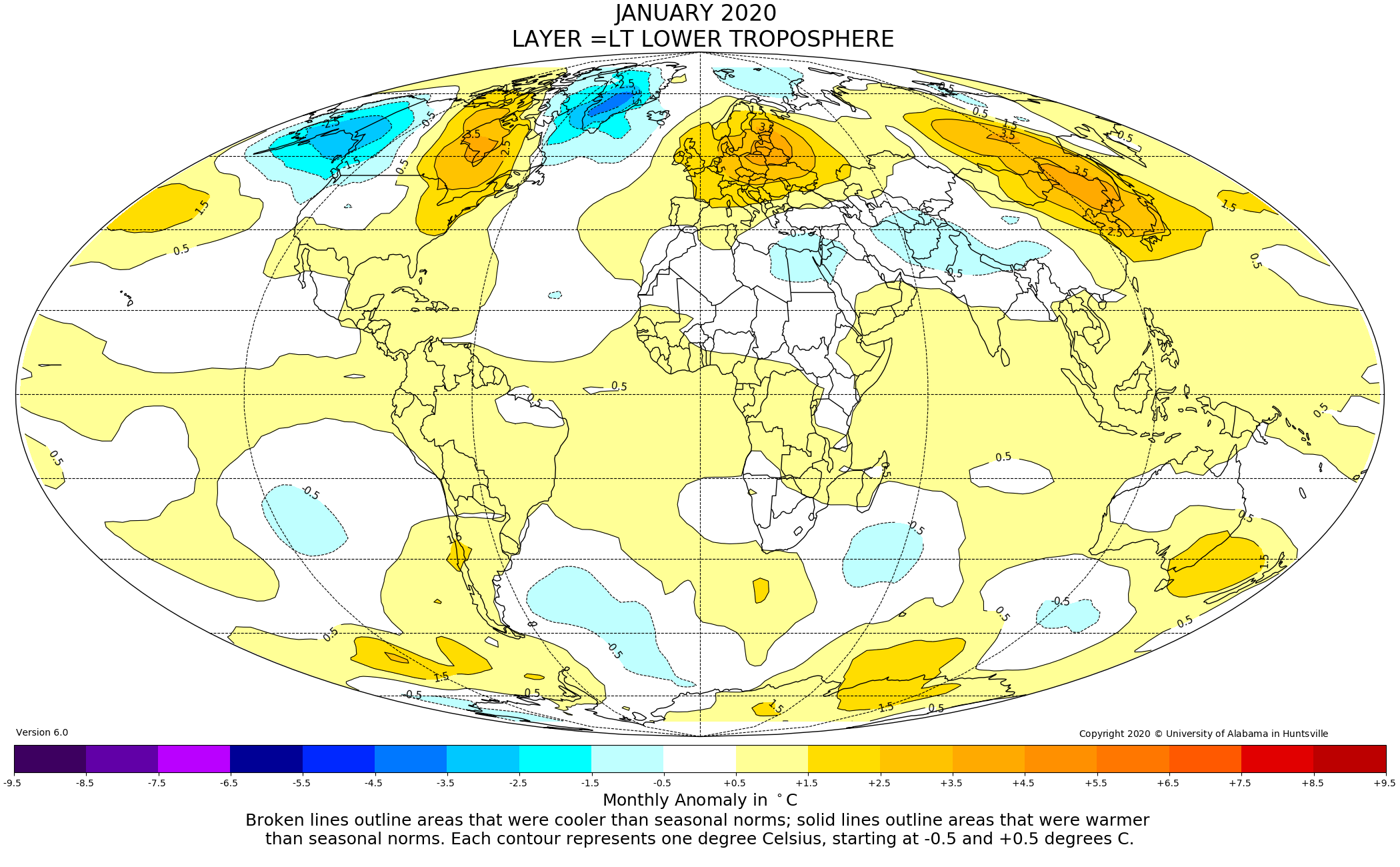
Global climate trend since Dec. 1 1978: +0.13 C per decade
Global Temperature Report: January 2020
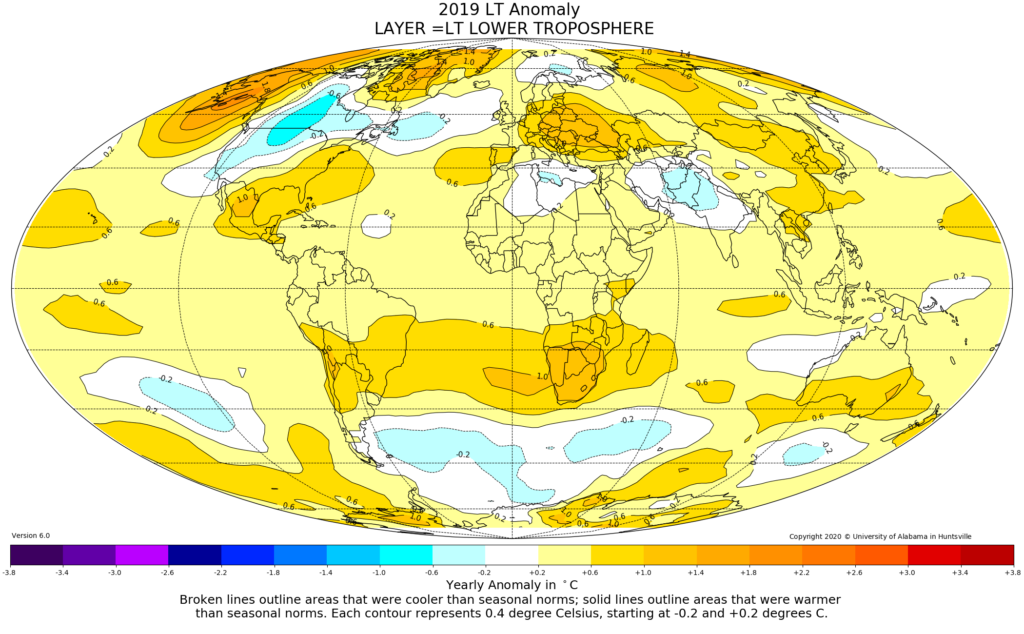
Global climate trend since Dec. 1 1978: +0.13 C per decade
Global Temperature Report: December 2019
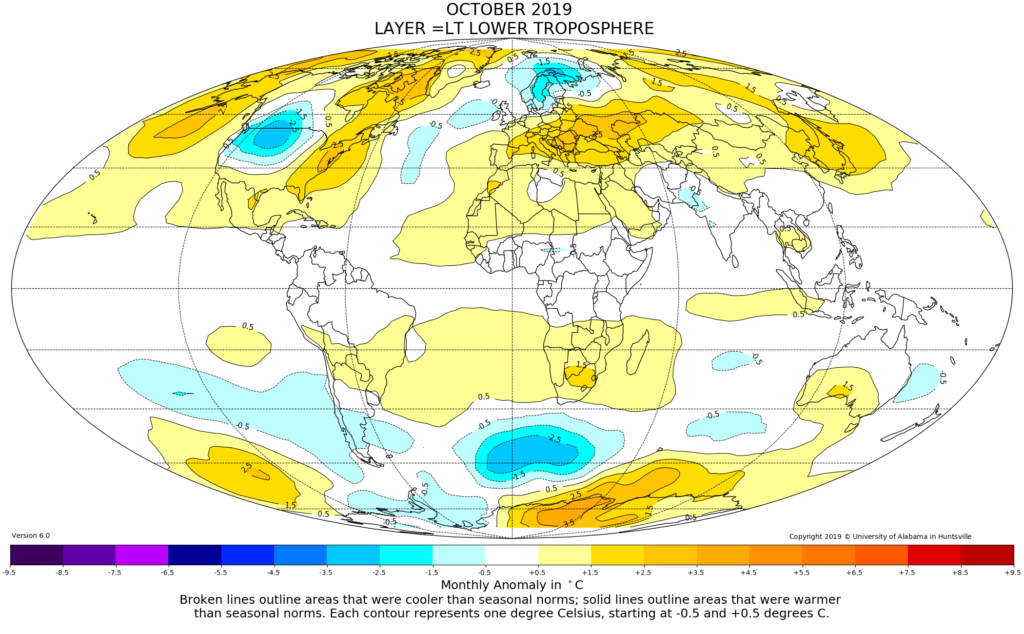
Global climate trend since Dec. 1 1978: +0.13 C per decade
Global Temperature Report: October 2019
Sharing data for improved forest protection and monitoring
Although the mapping of aboveground biomass is now possible with satellite remote sensing, these maps still have to be calibrated and validated using on-site data gathered by researchers across the world. A newly established global database will support Earth Observation and encourage investment in relevant field-based measurements and research.

Global Temperature Report: September 2019
Global climate trend since Dec. 1 1978: +0.13 C per decade